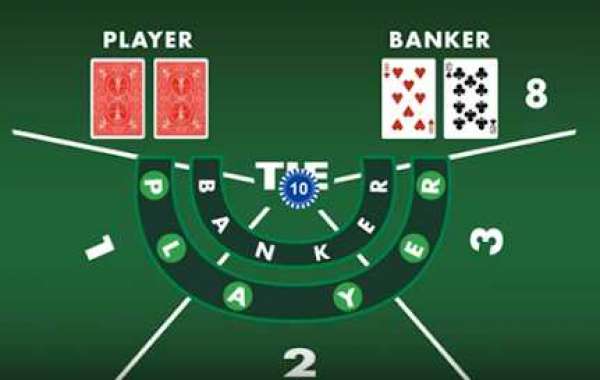In this blog, we’ll take a deep dive into Joker Stash’s operations, exploring how it worked, how it avoided shutdown for so long, and what made it a central hub for global cybercriminals.
The Foundation of Joker Stash
When It All Began
Joker Stash, also stylized as Joker’s Stash, first appeared around 2014. It started quietly but rapidly became a dominant player in the darknet carding scene.
While the operators remained anonymous, their methods, discipline, and use of complex technology quickly gave Joker Stash a reputation as a "professional-grade" illicit service.
The Joker Theme
The marketplace embraced a unique theme inspired by the comic-book villain “Joker.” This included:
Branding with clown and playing card imagery
Frequent “sales events” and promos styled as pranks
Trolling messages and sarcastic commentary directed at law enforcement
This distinct character helped build a loyal user base and recognizable identity.
How Joker Stash Operated
1. Data Listings: Card Dumps and Fullz
Joker Stash specialized in two main data categories:
Card Dumps: Track 1 Track 2 data from magnetic stripes used for cloning cards
Fullz: Complete identity packages—name, SSN, address, DOB, etc.—used for identity theft, tax fraud, and more
The platform often advertised “fresh” data from major retail breaches and frequently claimed exclusive sources, giving it an edge over other marketplaces.
2. Advanced Technical Infrastructure
Unlike many short-lived darknet markets, Joker Stash invested heavily in its infrastructure:
Decentralized hosting to prevent takedown
Used blockchain-based DNS (.bazar domains), which were harder to shut down
Mirror sites on Tor and other dark web networks
Frequent mirror rotations to stay ahead of law enforcement
This technical resilience was a key factor in the site’s long life.
3. Cryptocurrency Transactions
Joker Stash operated almost entirely on Bitcoin (BTC), later integrating Monero (XMR) to increase privacy. Transactions were anonymous and trace-resistant, which made it nearly impossible to follow the money trail.
Funds were managed via internal wallets, and users could deposit, withdraw, and spend within the site.
4. Automated Shop-Like Experience
Unlike forums that relied on peer-to-peer communication, Joker Stash was more like an e-commerce platform:
Users could search and filter by country, bank, card type, etc.
Instant purchase and auto-download features
Real-time updates to inventory
Pricing based on card quality, bank name, and rarity
This convenience made Joker Stash particularly popular with low- and mid-level cybercriminals who wanted easy access to stolen data.
User Trust and Reputation System
Seller Ratings and Buyer Feedback
Joker Stash allowed users to rate sellers, helping maintain a layer of quality control. This encouraged better business practices and minimized fraud among vendors.
Users could also:
Leave detailed reviews
Dispute bad purchases (with refunds in some cases)
Communicate via encrypted channels
These features helped build consumer confidence—even in an illegal marketplace.
Global Data Breaches Linked to Joker Stash
Several high-profile breaches were tied to Joker Stash’s listings, including:
Wawa Inc. (30M+ card records)
Indian banks and government portals
South Korean and Vietnamese financial institutions
Retail chains in the U.S. and Europe
These incidents showed Joker Stash’s global reach, with cards and data from nearly every continent represented in its inventory.
Law Enforcement Challenges
Why Was It So Hard to Shut Down?
Joker Stash was an investigative nightmare for several reasons:
Use of .bazar blockchain domains
Heavy reliance on cryptocurrencies with tumbling services
No central server—content mirrored across several layers of the dark web
Operated in jurisdictions with limited international cooperation
Even top cybersecurity firms and agencies like Europol, FBI, and Interpol found Joker Stash hard to pin down.
The Sudden Shutdown
In January 2021, Joker Stash’s operators announced their voluntary retirement, stating they were leaving due to health reasons and had made enough money.
The market gave users time to withdraw balances, and no “exit scam” occurred. By February 2021, the site had fully shut down.
This clean exit was almost unheard of in the world of darknet operations and further added to Joker Stash’s legacy.
Aftermath: What Came Next?
Following its closure, several platforms attempted to fill the void, including:
All World Cards
BriansClub
Ferum Shop
However, none reached the scale, sophistication, or loyalty Joker Stash commanded. The market’s closure created a fragmentation in the cybercrime world, making law enforcement monitoring somewhat easier—but also giving rise to more, smaller threats.
Risks and Cybersecurity Lessons
For Individuals
If your data was on Joker Stash, you could face:
Unauthorized purchases
Identity theft
Loan fraud, tax fraud, and more
Long-term damage to financial records
For Businesses
Joker Stash taught corporations the hard way:
You must invest in breach detection
You need rapid incident response plans
Data encryption and tokenization are not optional
PCI compliance doesn’t guarantee full protection
For Governments
Agencies learned that international cooperation, blockchain tracking, and cyberforensics are critical to fighting darknet crime.
Conclusion
Joker Stash wasn't just another dark web marketplace—it was a sophisticated, multi-million-dollar operation that ran circles around law enforcement for nearly a decade. Its rise and fall provide invaluable insights into the world of cybercrime and the infrastructure that supports it.
Understanding Joker Stash helps us recognize the importance of proactive cybersecurity measures, coordinated international enforcement, and education for users and businesses alike.
As threats continue to evolve, staying informed is the first step in staying secure.







